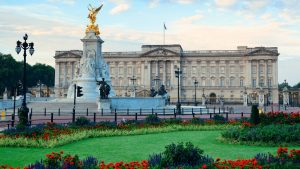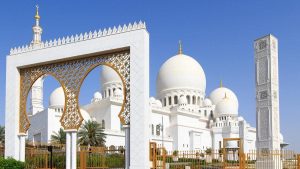
Are you going to Bulgaria?
If you’ve been debating whether the country’s second-largest city should be on your travel radar, get this:
Plovdiv is worth visiting for its incredible cultural, historical, and natural landmarks. Nature lovers will enjoy the gorgeous Maritsa River and Tsar Simeon Park; Roman architecture fans – the Odeon and the dazzling theater; and culture vultures – the Old Town and the artsy Kapana District.
This detailed guide will show you the 33 best reasons to visit Plovdiv, Bulgaria. By the end of the article, you’ll know why you should travel to Europe’s oldest city.
Fasten your seatbelts, and let’s explore!
✅ Note: This article contains affiliate links. In case you purchase something through one of these links, we may receive a small commission at no extra cost to you. Thank you for helping us keep creating the free content on this website!
Visit Plovdiv for the Stunning Attractions

One of the most interesting facts about Plovdiv is that it’s Europe’s oldest settlement. So, it’s no surprise the city overflows with breathtaking landmarks. Let’s explore Plovdiv’s top attractions below:
- The Old Town. With its cobblestoned streets and astonishing 18th– and 19th-century houses, there’s no better place to start your tour around Plovdiv than the Old Town. Inside, you can admire interesting museums, art galleries, antique theaters, and Roman stadiums. If none of these tickles your fancy, just grab a beverage and head to the highest point of the Old Town to relish a staggering vista of Plovdiv from above.
- The Ancient Theater. One of Plovdiv’s most jaw-dropping landmarks is its ancient Roman theater. The attraction sits on a hill in the city’s Old Town. The gorgeous backdrop of the mighty Rhodope Mountains and the theater overlooking the city center makes the site it even more gorgeous. Locals and tourists alike can marvel at masterful performances while sitting on the theater’s marble seats.
- Stadium of Philippopolis. Plovdiv’s old name is Philippopolis. When the Stadium of Philippopolis was constructed in the 2nd century AD, the town was the capital of the Roman province of Thrace. The huge arena is 160 ft. (50 m) wide, 820 ft. (250 m) long, and can welcome about 30,000 spectators. The stadium is one of the biggest and best-preserved buildings from Roman times.
- Kapana District. Bulgaria’s first creative neighborhood combines art and culturein a vibrant fusion. Kapana’s cobble streets lead you to quirky crafts shops, posh art galleries, and various refurbished buildings. Gastropubs, bakeries, and restaurants invite you with everything from local meals to French specialties. The district organizes the Kapana Fest every year, during which artists, performers, and street decorations all fight for your attention.
- Tsar Simeon Park. This green space dates back to 1892. The Swiss landscaper Lucien Chevalas created Tsar Simeon Park to serve as Plovdiv’s main space for relaxation. Inside, you can marvel at a lavish Viennese pavilion and the fountain of the Olympian Goddess Demeter. The park’s most popular attraction is the Singing Fountains – a true spectacle of light and color.
- The Singing Fountains. If you visit Plovdiv in summer, prepare for sizzling hot temperatures even at night. A good way to escape the heat waves is heading to the Singing Fountains in Tsar Simeon Park. The water attraction enchants spectators every Thursday, Friday, and Saturday evening with its vivacious display of colors and lights. The show starts at 9:30 PM, but we suggest you arrive earlier to save your spot.
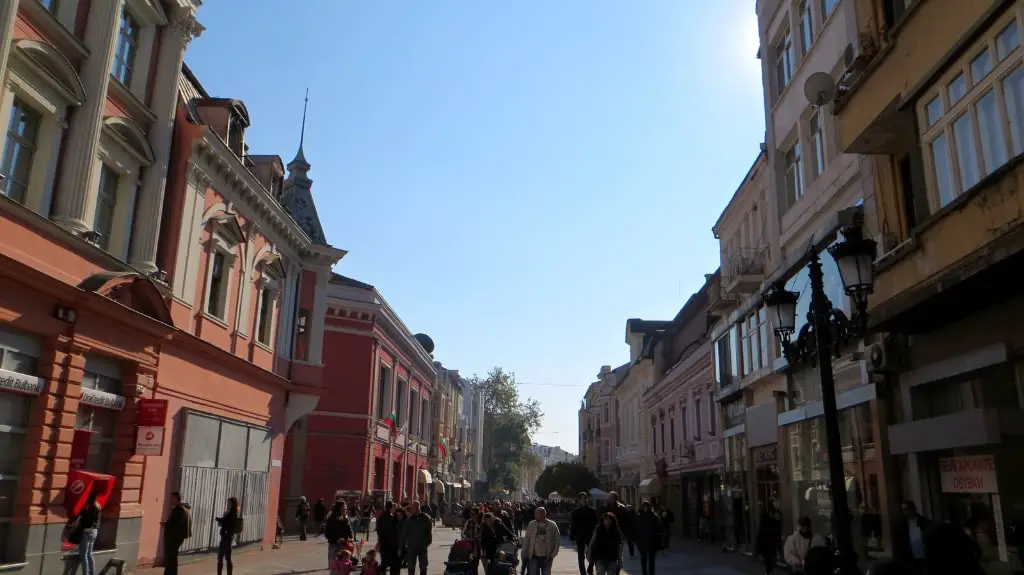
- The Maritsa River. Another way to cool down from a hot summer day in Plovdiv is a walk by the river. The gorgeous Maritsa River is not navigable, but by discharge, it’s among Europe’s largest. Once upon a time, Maritsa was also the main river for the ancient Thracians. You can benefit from numerous bike lanes and lush parks around the riverbed.
- Statue of Milyo the Crazy. A small bronze statue is typically not something that impresses people. But similar to Bratislava, Plovdiv’s Milyo the Crazy is an exception. Legend has it that Milyo wasn’t mentally stable, but his funny jokes had passers-by in stitches. Locals believe Milyo was an intelligent guy who spoke several languages, but he went bananas by reading too much. Whether that’s true, we don’t know. But we know that touching his knee brings good luck. Try it for yourself 🙂
- Bachkovo Monastery. Around 40 minutes away from Plovdiv, you’ll find the second-biggest monastery in Bulgaria. The Bachkovo Monastery sits in the powerful embrace of the mystical Rhodope Mountains, on the right bank of the Chepelare River. The cloister dates back to 1083, and combines the Bulgarian, Georgian, and Byzantine Orthodox faith in a unique blend. The best way to discover Bulgaria’s second-largest monastery is on a day trip from Plovdiv. We recommend this tour to the Bachkovo Monastery as it includes wine tasting.
- Asen’s Fortress. Close to the Bachkovo Monastery stands the astounding Asen’s Fortress. The stronghold that oversees the scenic town of Asenovgrad dates back to the Middle Ages. In 1231, the then Bulgarian tsar – Ivan Asen II – renovated the fortress. The most noteworthy feature of the 11th-century fortification is the Church of the Holy Mother of God. If you’d like to visit both Asen’s Fortress and the Bachkovo Monastery, the most convenient way is an organized day trip from Plovdiv. Click here to grab your spot before it sells out.
- The longest pedestrian street in Europe. Plovdiv’s main pedestrian thoroughfare is the longest on the European continent. The street begins at the popular Trimontium Hotel and stretches for 1.09 mi (1.75 km) to the ancient Roman Stadium and the Dzhumaya Mosque. Locals and tourists alike flock there to sit, shop, or stroll around the countless stores, cafés, and restaurants.
- The Seven Hills. Originally, Plovdiv was erected on seven hills (tepes). In the early 20th century, one of them – Markovo Tepe – was destroyed. Today, you’ll find a shopping mall in its original place. The best panorama over Plovdiv is from Bunardzhika Hill, which is more than 820 ft. (250 m) high. At the top, you can also admire the daunting Alyosha monument visible from many parts of the city.
Explore Plovdiv for the Staggering Temples

Plovdiv’s rich history is further magnified by the number of impressive spiritual spots. From churches through cathedrals to mosques, dive into the city’s religious temples below.
- Small Basilica of Philippopolis. One of the churches Plovdiv is worth visiting for is the stunning Small Basilica of Philippopolis. Authorities unearthed the remains of the early Christian temple in 1988 during construction works. This is more than 14 centuries after the basilica was built. Originally, it was a three-nave church that showcased the outstanding abilities of mosaic constructors from ancient Philippopolis.
- Church of St. Constantine and Helena. Erected in 337, the Church of St. Constantine and Helena took its name from Emperor Constantine the Great, and his mother Helena. Inside the temple, you can marvel at the spectacular icons and frescoes of the masters from the Debar School of Iconography. The church’s iconostasis is particularly unique because of its gilt and polychrome decoration.
- St. Louis Cathedral. One of Bulgaria’s biggest and most important Roman Catholic churches is the St. Louis Cathedral in Plovdiv. The temple bears the name of Louis IX of France, better known as St. Louis. A must-visit attraction inside the cathedral is the gigantic organ. The exterior graciously “marries” Neo-Baroque with Neoclassicism architectural styles.
- Dzhumaya Mosque. The core temple for Muslims in Plovdiv is the peculiar Dzhumaya Mosque. When the Ottomans occupied the city in the 14th century, they built the mosque on the site of a cathedral. Dzhumayata is one of the biggest and oldest Ottoman mosques on the Balkan Peninsula. The roof of the holy place consists of nine domes, while the prayer hall measures 89 ft. x 108 ft. (27 x 33 m).
- Dervish Monastery Mevlevi Hane. Plovdiv’s Old Town is home to one of the most unique religious temples in Bulgaria – a Muslim monastery. Yep, that’s not a typo. Mevlevi Hane’s name originates from “mavlevii”, which is the Order of the Dancing Dervishes. Once upon a time, this place used to be a Christian church. But the Ottomans demolished it and erected Mevlevi Hane in its spot. The monastery’s exterior is modest, but the interior abounds with frescoes and carvings.
Travel to Plovdiv for the Peculiar Museums

If you like discovering both regular and weird museums, Plovdiv offers them both. The following section walks you around the most interesting museums of Plovdiv.
- Plovdiv Aviation Museum. The world doesn’t have a ton of aviation museums. So, visiting the one in Plovdiv must definitely be on your wander list. In close vicinity to the airport, the Plovdiv Aviation Museum tells you the history and development of Bulgarian aviation. Within its limits, you can marvel at two exhibitions – external and internal. The highlight of the exhibition is the military hydroplane Arado 196 A-3 “Shark”, which is the only remaining hydroplane of its kind globally.
- Regional National History Museum. A contemporary exposition with a strong emphasis on nature preservation awaits you in Bulgaria’s second-biggest museum. Plovdiv’s Regional National History Museum houses a large library where you can discover scientific books and publications in Bulgarian, English, Russian, German, and other languages. More than 30 exotic plants and aquarium fish species are on display in the museum’s freshwater aquarium.
- Regional Archaeological Museum. Plovdiv is known for being Europe’s oldest city. That’s why some of the exhibitions inside the Regional Archaeological Museum will take you all the way back to the Eneolithic and Bronze Ages (5,000 to 1,000 years BC). The museum boasts a gigantic collection of over 100,000 artifacts and exhibits related to the history of Plovdiv.
- Regional Ethnographic Museum. Plovdiv’s Regional Ethnographic Museum is the second-biggest specialized museum of this kind in the country. More than 5,000 musical and ritual instruments, 7,000 crafts items, and 11,000 textile and clothing exhibits await you in this colorful museum. The permanent exhibition displays cultural aspects from the Thracian Valley and the surrounding mountains – the Rhodopes and Sredna Gora.

- Zlatyu Boyadzhiev Permanent Exhibition. Zlatyu Boyadzhiev is one of the most famous painters who lived in Plovdiv in the 20th century. That’s why there’s a special museum dedicated to his masterpieces. Boyadzhiev’s art focused on Bulgaria and its people. You’ll find the Zlatyu Boyadzhiev Permanent Exhibition in a gorgeous old house that originates in 1860.
- Cultural Center-Museum TrakArt. The fascinating Cultural Center-Museum TrakArt packs a powerful exploration punch. Start with the “Glass in Ancient Art” exhibition that walks you around the history of glass manufacturing. Continue with an ancient Roman mosaic that dates back to the 3-4th century AD. End your visit by marveling at the peculiar exhibition of Roman miniature portraits.
- Art Gallery & Museum Philippopolis. The Old Town of Plovdiv houses another iconic institution. Art Gallery & Museum Philippopolis is home to a private art collection that displays artworks from the Bulgarian Revival period to masterworks of popular contemporary artists. When you drain your “art and paintings” battery, recharge it at the museum’s decadent restaurant that offers a great vista of Plovdiv.
- Balabanov’s House. Built by a wealthy Plovdiv merchant in the 19th century, Balabanov House is a stunning house-museum. The edifice invites you with its rich architectural details and flat, plastic ornamentations. In the 1930s, the house was demolished. But thanks to the indefatigable efforts of a prominent researcher of Renaissance buildings, locals reconstructed it 40 years later.
- House-Museum Hindliyan. Another must-visit house-museum in the Old Town is the House of Stepan Hindliyan. In Plovdiv, it’s one of the very few buildings that has conserved its unique symmetric design. Nowadays, House-Museum Hindliyan is an exhibition hall and one of the best examples of Bulgarian Revival-style architecture. Stepan Hindliyan was a businessperson who traded with Italy, Portugal, Egypt, India, and the Ottoman Empire.
Visit Plovdiv for the Amazing Gastronomic Adventures
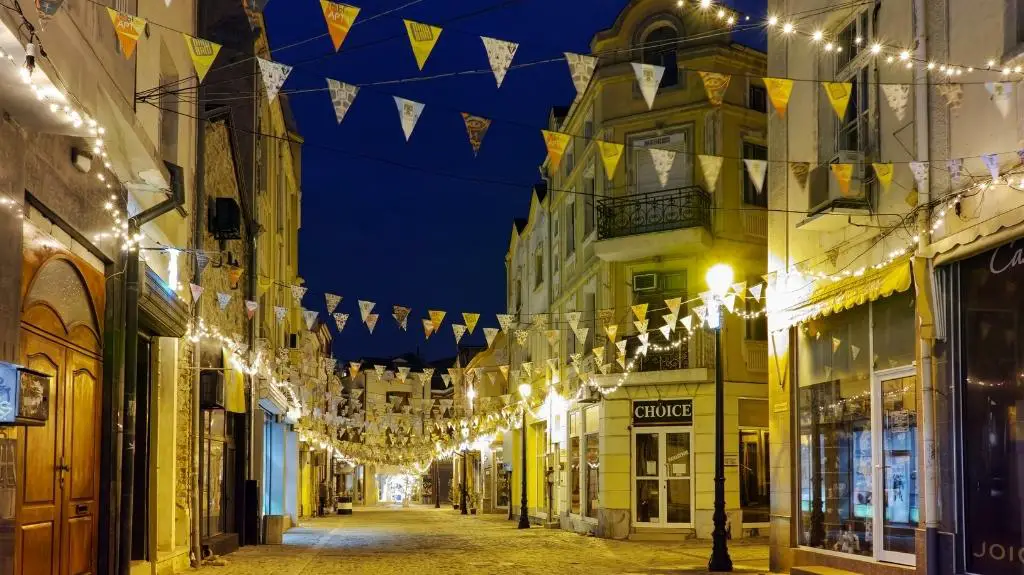
Plovdiv packs one of the strongest punches of world-class restaurants in Europe. Its eateries can rival those of Paris, Barcelona, and London. With that said, let’s see which restaurants make Plovdiv worth visiting.
- Pavaj. Plovdiv’s top restaurant will satiate even the most discernible palates with its sophisticated version of Balkan cuisine classics. The retro interior takes you back to Soviet times but in a fun and entertaining way. While it lacks space, Pavaj makes up with its mouthwatering dishes. The service is excellent, and the prices are great for the quality you get. Just make sure to book a spot in advance.
- Aylyakria. Gastro bar Aylyakria is an experience. With its elegant combination of contrasts, the restaurant awakens all senses. Inside the century-old building in the Kapana District, you can tease your palate with a fine selection of Bulgarian wines and an explosion of ultra-tasty Bulgarian dishes. Aylyakria melts all your stress away with its delightful atmosphere and relaxed yet friendly service.
- Hemingway. Like BBQ and grill while chatting with friends and listening to music? Then, you shouldn’t miss Hemingway. Named after the famous writer who is one of Key West’s most prominent residents, you’ll find this chic restaurant near the Roman Odeon in Plovdiv’s Old Town. Delectable wine, freshly baked bread, and finger-licking food blend well with Hemingway’s bohemian décor and comfort. Reserve your table in advance here.
- Jägerhof. Two Bulgarian brothers traveled to Bavaria, Germany a few times. Thanks to their love for the region and its delectable beer, they established Jägerhof. The restaurant prides itself on its Bavarian-style brewery and hearty dishes. Lunch menus are different every workday. Head to the second floor to admire the brewing system in action. When you quench your beer thirst, we suggest you crash in the modern Jägerhof Hotel, which is just a few feet away from the restaurant.
- Philippopolis. Satisfy all your gourmet desires in the restaurant that attracts food and wine connoisseurs alike. It’s not uncommon to run into international movie stars and celebrities in Philippopolis. The restaurant’s exclusive seasonal menus take you on a journey around traditional Bulgarian dishes and international specialties. For the best view, book a spot in the garden, which overlooks the Kapana District.
- Memory. A visit to Plovdiv’s Memory is always memorable. Chic and colorful decoration welcomes guests that crave food prepared with love, care, and passion. The restaurant takes great pride in its creative and contemporary cuisine. To make your stay truly unforgettable, Memory further relaxes the atmosphere with soul and jazz music and spices it up with the aroma of excellent wines.
- Porky’s BBQ. If you’re a barbecue worshipper, head to Porky’s BBQ. Unusual salads, tempting appetizers, mouthwatering desserts, and of course finger-licking barbecue await you at this modern Plovdiv eatery. Porky’s prides itself on its marinades that could satisfy even the most pretentious palates. Wanna have some extra fun? Every week, they organize beer pong tournaments.
Is Plovdiv Worth Visiting? The Answer Is a Resounding YES
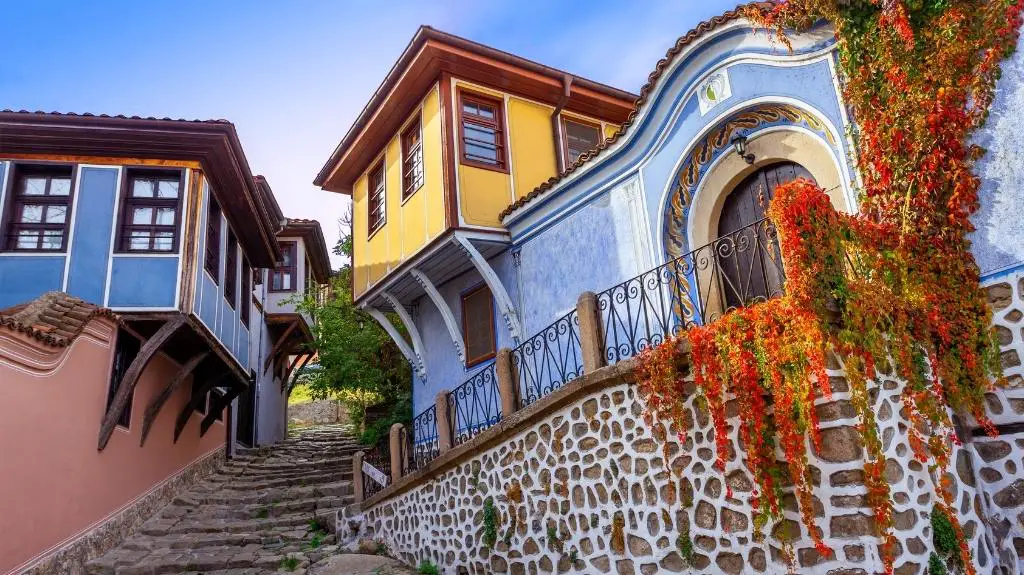
This wraps up our list with 33 top reasons to visit Plovdiv.
Europe’s oldest city invites you with its marvelous Roman ruins, interesting museums, gorgeous religious temples, and spectacular panoramas.
On top of that, it’s the perfect place to relax in the artistic Kapana District, stroll through the Old Town, or admire the city from one of its seven hills.
So, if you’ve been wondering whether you should visit Plovdiv or not, the answer is now clear.
Check out how you can travel to Plovdiv on a day trip from Sofia in our detailed guide.
Before you explore the next article, we’d love to know:
Have you been to Plovdiv, Bulgaria? Did you consider it worth the trip?
Share with us in the comment section below.




